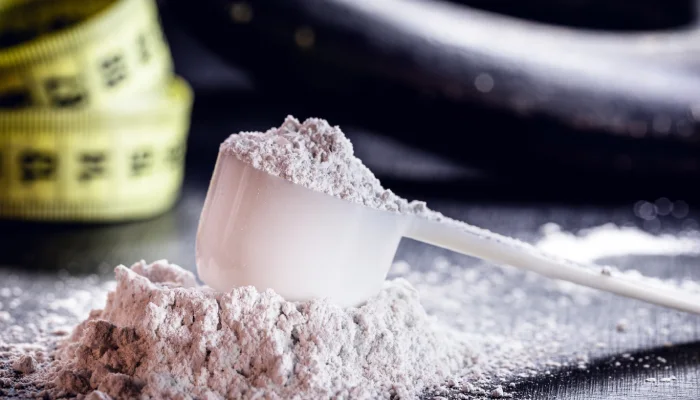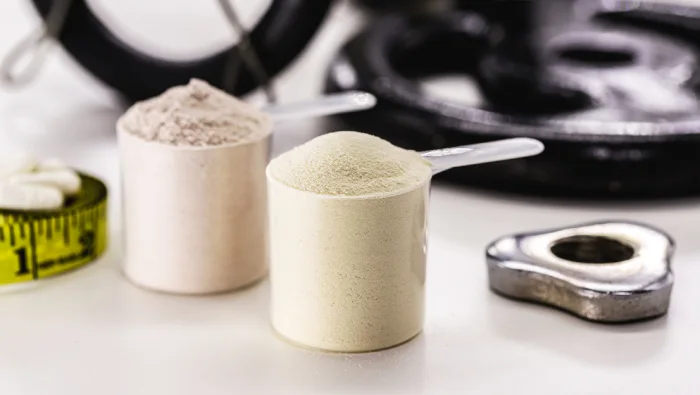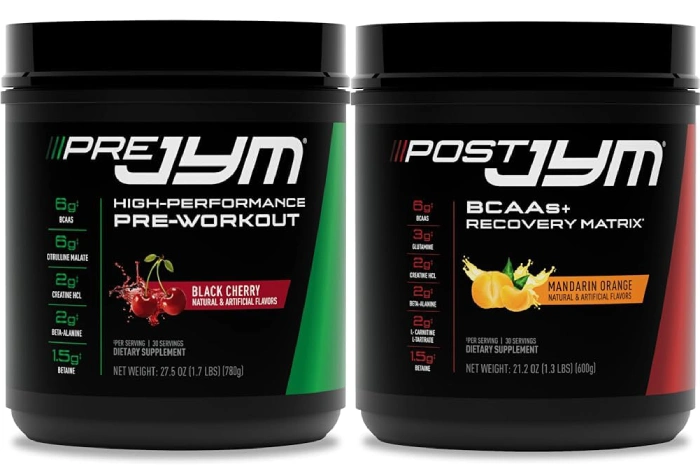What is HMB and How Does It Work?
Chemical Structure and Natural Sources
Beta-hydroxy beta-methylbutyrate (HMB) is a metabolite of the essential amino acid leucine. While HMB and leucine are closely related, they serve distinct roles in the body. HMB is naturally produced when your body breaks down leucine, though only about 5% of leucine is converted to HMB. This compound can be found in small amounts in foods like catfish, grapefruit, and alfalfa, but these sources provide minimal quantities compared to supplementation.
The Connection Between HMB and Leucine
The relationship between HMB and leucine is particularly interesting from a supplementation perspective. While leucine is well-known for its role in protein synthesis, HMB appears to work through multiple mechanisms to support muscle health. When considering HMB and leucine supplementation, it’s important to understand that they complement each other rather than compete. Recent research suggests that HMB may be more effective than leucine alone for certain specific outcomes, particularly in preventing muscle protein breakdown.
Relationship with Creatine Supplementation
The combination of creatine HMB has gained significant attention in the sports nutrition world. While both compounds can be effective individually, research suggests their combination may offer enhanced benefits. Creatine HMB supplementation may provide synergistic effects, particularly in supporting muscle growth and recovery. This combination has become increasingly popular among athletes and fitness enthusiasts seeking to optimize their training results.

The Science Behind Creatine HMB Supplementation
Latest Research Findings
Recent studies on creatine HMB have shown promising results in various areas of performance and recovery. The research indicates that this combination may be particularly effective for:
- Enhancing muscle protein synthesis
- Reducing muscle damage during intense training
- Improving recovery between training sessions
- Supporting lean mass gains when combined with resistance training
Mechanism of Action
HMB works through several pathways to support muscle health:
- Reducing muscle protein breakdown
- Stimulating muscle protein synthesis
- Supporting muscle cell membrane integrity When combined with creatine, these effects appear to be enhanced, as creatine HMB provides both anti-catabolic (HMB) and anabolic (creatine) support.
Synergistic Effects
The synergistic relationship between creatine and HMB is particularly noteworthy. While creatine primarily supports ATP production and muscle volume, HMB focuses on reducing muscle breakdown and supporting recovery. This creatine HMB combination creates a comprehensive approach to muscle support, making it especially valuable for individuals engaged in intensive training programs.
Key Benefits of HMB Supplementation
Muscle Growth and Recovery
Research has demonstrated that HMB supplementation benefits include:
- Reduced muscle damage markers during intense training
- Enhanced recovery between workouts
- Support for lean mass development when combined with proper training
- Improved strength gains in resistance training programs
When combined with creatine, these benefits may be further enhanced, making creatine HMB a popular choice among athletes and bodybuilders.
Athletic Performance Enhancement
Studies examining creatine HMB combinations have shown notable improvements in various aspects of athletic performance. The key benefits observed include enhanced power output during high-intensity activities, improved endurance during resistance training, and better overall workout capacity. This combination appears particularly effective during periods of intense training when the body needs additional support for recovery and performance.
Age-Related Benefits
Research suggests that HMB supplementation may be particularly beneficial for older adults, especially when combined with resistance training. The compound helps maintain muscle mass and strength, which naturally decline with age. When used alongside creatine, these age-related benefits may be further enhanced, making creatine HMB a valuable consideration for the aging population.
Creatine and HMB: A Powerful Combination
Understanding the Synergy
The combination of creatine and HMB represents a comprehensive approach to muscle support. While creatine enhances energy production and muscle volumization, HMB helps prevent muscle breakdown and supports recovery. This synergistic effect makes creatine HMB particularly effective for individuals engaged in intense training programs or those looking to maintain muscle mass.
Optimal Dosage Strategies
Finding the right balance when supplementing with creatine HMB is crucial for optimal results. Typical recommendations include:
- HMB: 3-6 grams daily, divided into 2-3 doses
- Creatine: 5 grams daily after the loading phase The exact dosage may vary based on individual factors such as body weight, training intensity, and specific goals.
Timing Considerations
Timing can significantly impact the effectiveness of creatine HMB supplementation. Many experts recommend:
- Taking HMB doses spread throughout the day
- Consuming creatine post-workout
- Ensuring consistent daily intake for both supplements
Essential Nutrients That Complement HMB
HMB and Vitamin D Interaction
The relationship between HMB and vitamin D has gained attention in recent research. Studies suggest that vitamin D may enhance the effectiveness of HMB, particularly in terms of muscle strength and function. This interaction is especially relevant for:
- Athletes training indoors
- Older adults
- Individuals with limited sun exposure
Other Beneficial Combinations
Beyond creatine HMB and vitamin D, several other nutrients may enhance the effectiveness of HMB supplementation:
- Protein: Supports overall muscle protein synthesis
- Essential amino acids: Complement HMB’s anti-catabolic effects
- Electrolytes: Support hydration and muscle function
How to Choose the Best HMB Supplement
Quality Indicators
When selecting an HMB supplement, consider these key factors:
- Third-party testing certification
- Manufacturing standards (GMP certification)
- Source quality and purity
- Form of HMB (calcium HMB is most common and well-researched)
Forms and Formulations
The supplement market offers various formulations of creatine HMB, each designed to optimize absorption and effectiveness. The calcium salt form of HMB has demonstrated superior stability and bioavailability in numerous studies. When combined with creatine, these formulations often come in powder form, allowing for easy dosage adjustments and mixing flexibility. The powder form also tends to be more cost-effective and versatile compared to capsules or tablets.
Price-Value Considerations
While premium supplements may come with a higher price tag, they often provide better quality assurance and purity guarantees. Investment in high-quality creatine HMB supplements typically translates to better results and reduced risk of contaminants. The market offers various price points, but it’s crucial to remember that the cheapest option isn’t always the most economical in terms of actual benefits received.
Dosage Guidelines and Timing
Recommended Daily Intake
Understanding proper dosage is crucial for maximizing the benefits of creatine HMB supplementation. The timing and frequency of intake can significantly impact results. Morning and pre-workout doses are common practices among experienced users, though some research suggests that post-workout administration may be equally effective. The key lies in consistency rather than perfect timing – maintaining regular intake patterns supports steady blood levels and optimizes the supplement’s effectiveness.
Loading Phase vs. Maintenance
Unlike creatine, which often involves a loading phase, HMB typically doesn’t require this approach. However, when combining creatine HMB, some users opt for a modified loading strategy. This usually involves a higher initial creatine dose while maintaining standard HMB levels. After the loading period, users transition to a maintenance phase where both supplements are taken at regular, recommended doses.
Safety Profile and Potential Side Effects
Common Side Effects
Clinical research has consistently demonstrated the safety of both HMB and creatine supplementation when taken as directed. However, as with any supplement, some individuals may experience mild side effects. The most commonly reported issues are generally mild and temporary, including digestive adjustments during the initial supplementation period. These effects often resolve as the body adapts to the supplementation routine.
A common question among potential users is “is HMB bad for your liver?” Research has shown no significant adverse effects on liver function with proper HMB supplementation. However, as with any supplement, individuals with pre-existing liver conditions should consult healthcare providers before starting any new supplementation regimen.
Drug Interactions
The interaction profile of creatine HMB with various medications appears to be minimal, but certain precautions are warranted. Individuals taking medications that affect muscle metabolism or kidney function should exercise particular caution and consult healthcare providers. This conservative approach ensures safe supplementation while maximizing potential benefits.
HMB Supplement Review: Market Analysis
Current market trends show increasing interest in creatine HMB combinations, driven by growing research supporting their synergistic effects. Consumer feedback indicates high satisfaction rates, particularly among those following recommended dosage protocols and maintaining consistent supplementation schedules. The supplement market has responded to this demand with various formulations, though quality and pricing can vary significantly between manufacturers.
The evolution of HMB supplements has led to improved formulations and delivery systems. Modern products often include complementary ingredients that may enhance absorption or provide additional benefits. However, it’s essential to focus on products with clear labeling and transparent ingredient lists rather than those making extravagant claims or using proprietary blends.

Target Demographics and Use Cases
Athletes and Bodybuilders
The combination of creatine HMB has become increasingly popular among serious athletes and bodybuilders seeking to optimize their training results. These individuals often report enhanced recovery capacity and improved strength gains when following a consistent supplementation protocol. The anti-catabolic properties of HMB, combined with the performance-enhancing effects of creatine, create a comprehensive approach to supporting intense training regimens. This synergistic effect particularly benefits those engaging in high-volume resistance training or practicing multiple training sessions per day.
Aging Adults
For older adults, maintaining muscle mass becomes increasingly challenging due to natural aging processes. The combination of creatine HMB offers promising support for this demographic, particularly when combined with regular resistance training. Research suggests that this supplementation approach may help preserve muscle strength and functional capacity, supporting overall quality of life and independence in aging populations.
HMB Supplement Pros and Cons
The decision to incorporate HMB supplementation into one’s routine requires careful consideration of various factors. While many users experience significant benefits, understanding both advantages and limitations helps set realistic expectations. Those considering creatine HMB supplementation should weigh these factors against their personal goals and circumstances.
Advantages for Different Users
Regular supplementation with creatine HMB has demonstrated several distinct benefits across various populations. Athletes often experience enhanced recovery and improved training adaptations, while older adults may notice better maintenance of muscle mass and strength. The supplement combination appears particularly effective during periods of intense training or when trying to preserve muscle mass during caloric restriction.
Limitations and Considerations
Despite its benefits, creatine HMB supplementation isn’t a magic solution. Results vary between individuals, and factors such as diet, training intensity, and consistency play crucial roles in outcomes. The financial commitment of long-term supplementation should also be considered, as quality products represent a significant investment in one’s health and fitness goals.
Frequently Asked Questions (FAQs)
Q: Can I take HMB and vitamin D together?
A: Yes, combining HMB and vitamin D is not only safe but potentially beneficial. Research suggests that vitamin D may enhance HMB’s effectiveness in supporting muscle strength and function. Both supplements can be taken as part of your daily routine.
Q: How long does it take to see results from creatine HMB supplementation?
A: Most users report noticeable benefits within 2-4 weeks of consistent supplementation. However, results vary based on individual factors such as training intensity, diet, and overall lifestyle habits.
Q: Is there an optimal time to take creatine HMB?
A: While timing isn’t as crucial as consistency, many users prefer taking their supplements around workout times. Post-workout consumption may be particularly beneficial, though maintaining regular daily intake is more important than perfect timing.
Q: Are there any specific storage requirements for HMB supplements?
A: Store HMB supplements in a cool, dry place away from direct sunlight. Most products remain stable at room temperature, but always check specific storage instructions on the product label.
Q: How does HMB compare to regular leucine supplementation?
A: While both HMB and leucine offer benefits, they work through different mechanisms. HMB appears more effective for reducing muscle breakdown, while leucine primarily stimulates protein synthesis. Some users choose to supplement with both for comprehensive muscle support.
Conclusion: Making an Informed Decision
The growing body of research supporting creatine HMB supplementation provides compelling evidence for its use in various populations. When considering supplementation, it’s essential to approach it as part of a comprehensive health and fitness strategy rather than a standalone solution. Success with creatine HMB supplementation typically comes from consistent use, proper dosing, and integration with appropriate training and nutrition protocols.
Individual goals, budget considerations, and long-term commitment should all factor into the decision-making process. While the benefits of creatine HMB supplementation are well-documented, results vary between individuals. Starting with recommended doses, maintaining consistency, and monitoring progress helps optimize results while ensuring safe supplementation practices.
For those considering creatine HMB supplementation, consulting with healthcare providers, particularly for individuals with pre-existing conditions or those taking medications, remains a prudent first step. This approach ensures safe implementation while maximizing potential benefits from supplementation.



